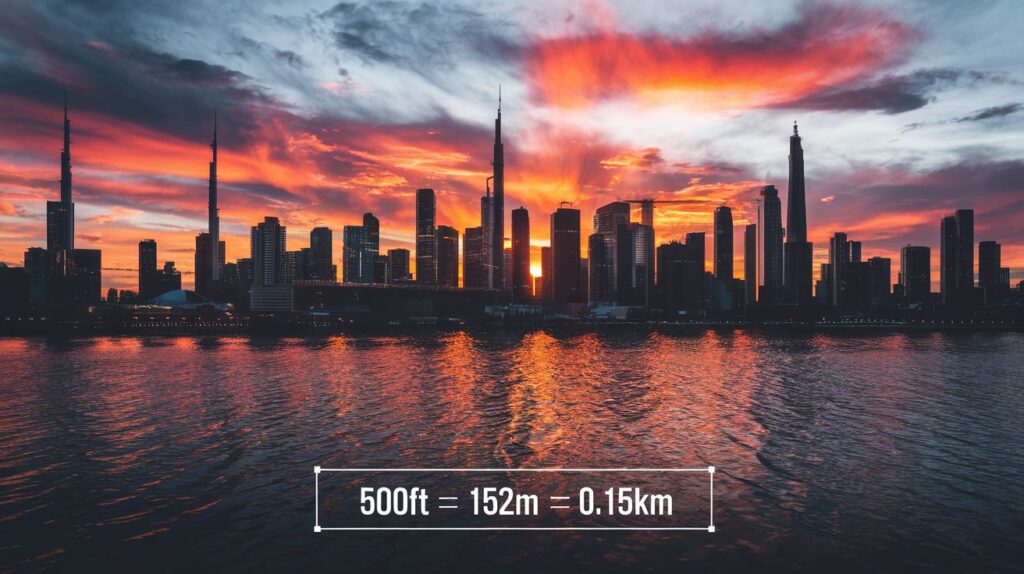Introduction to 500 Feet
Imagine a length measurement that stretches beyond typical human comprehension.Lets dive deep into 500 Feet Long/Big
Five hundred feet represents an extraordinary spatial dimension that challenges our everyday understanding of size.This incredible distance towers above most structures, dwarfing familiar landmarks and pushing the boundaries of our size comparison capabilities.
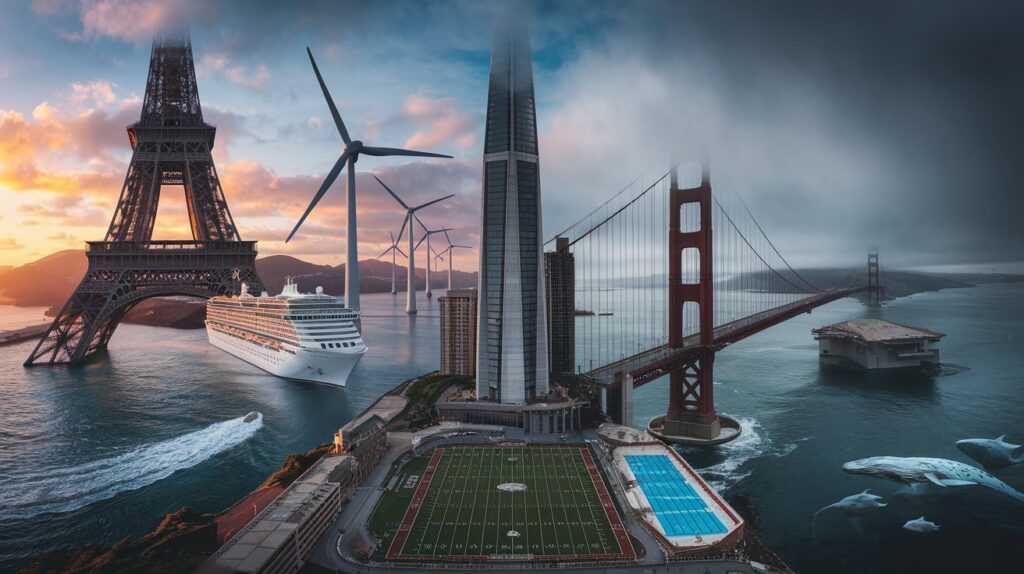
How Big is 500 Feet?
Five hundred feet translates to approximately 0.15 kilometers or 152 meters. To put this massive scale understanding into perspective, it’s nearly as tall as a fifty-story building. Walking this distance would take an average person several minutes, showcasing the true magnitude of this impressive measurement.

How High Does 500 Feet Reach into the Air?
Vertical measurement reveals the true impact of 500 feet. This height reaches well above most city skylines, placing objects at a level where clouds begin to form. Spatial awareness becomes critical when understanding such immense vertical distances.
Interactive Discussion: 18 Things That Are 500 Feet Long
How Far is 500 Feet to Walk?
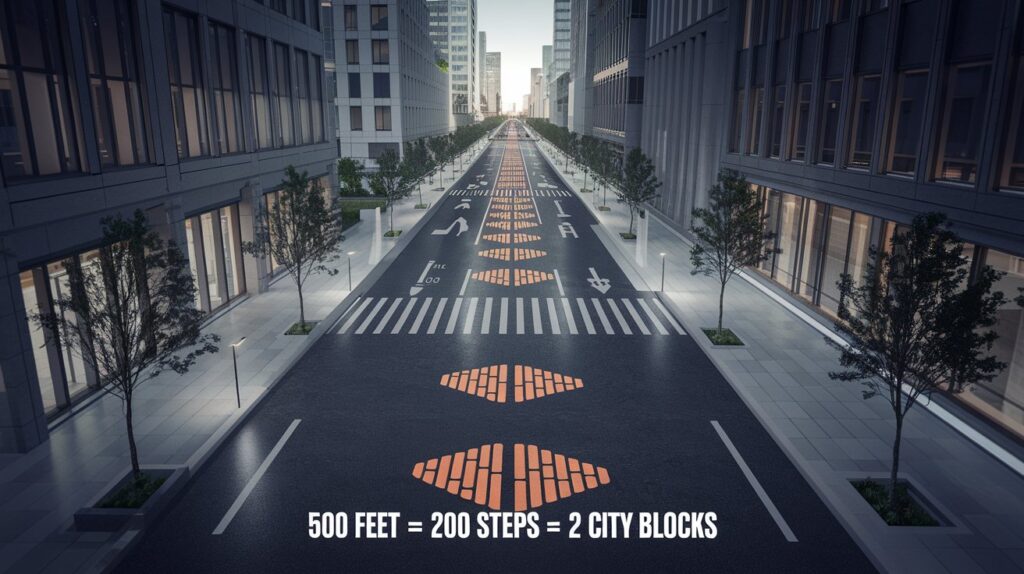
Walking 500 feet isn’t a quick stroll. An average person takes about 200 steps to cover this distance. Distance calculation shows it’s equivalent to walking nearly two city blocks, demonstrating the substantial nature of this measurement.
Must Visit : 20 Things That Are 500 Meters Long or Big
Things That Are 500 Feet Long/Big
| Measurement Reference | Length (Feet) | Comparison to 500 Feet |
|---|---|---|
| Eiffel Tower | 984 | Nearly 2x 500 feet |
| Football Field | 360 | About 1.4x 500 feet |
| Blue Whale | 90-110 | Less than 1/4 of 500 feet |
| Olympic Swimming Pool | 164 | About 3x 500 feet |
| Cruise Ship | 1,000+ | 2x 500 feet |
| Golden Gate Bridge Tower | 500-550 | Approximately 500 feet |
| Space Shuttle Assembly Building | 525 | Slightly over 500 feet |
| Large Wind Turbine | 450-500 | Near or equal to 500 feet |
| Communication Tower | 480-520 | Near 500 feet |
| Aircraft Carrier | 1,000+ | 2x 500 feet |
1. Half of The Eiffel Tower: An Architectural Marvel of Parisian Engineering
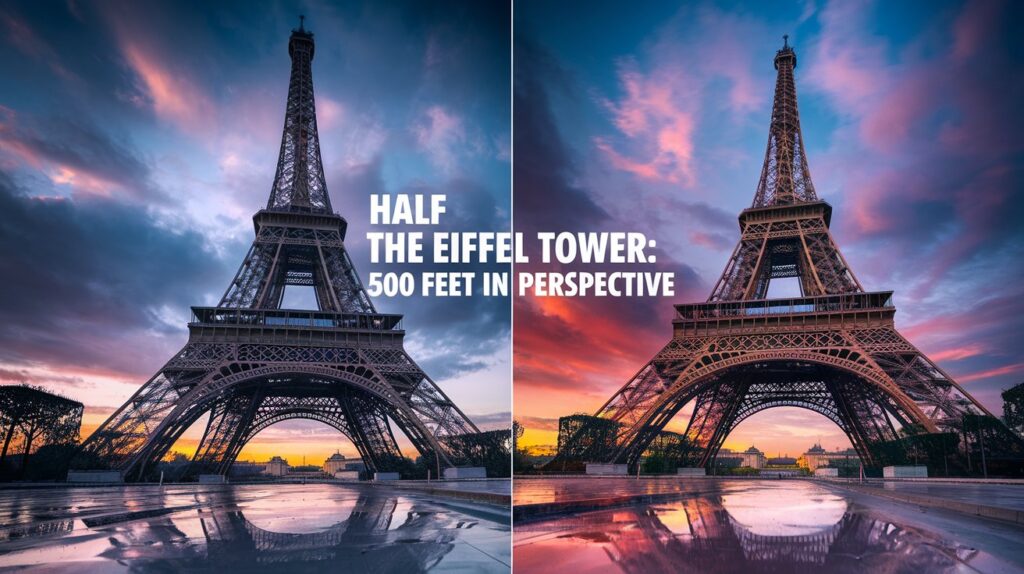
The Eiffel Tower, a symbol of French architectural brilliance, stands as a testament to human engineering. At 1,083 feet tall, 500 feet represents just under half of this iconic structure. Designed by Gustave Eiffel for the 1889 World’s Fair, the tower dominates the Paris skyline, attracting millions of visitors annually. Its intricate iron lattice work demonstrates how structural dimensions can transform a simple engineering project into a global cultural landmark.
2. Three Olympic-sized Swimming Pools: A Liquid Landscape of Athletic Precision

Olympic swimming pools stretch 164 feet long, making 500 feet equivalent to nearly three competitive swimming venues. These precisely engineered aquatic arenas represent the pinnacle of athletic infrastructure. Each pool requires meticulous design to ensure fair competition, with exact measurements that allow world-class athletes to push the boundaries of human performance. The 500-foot comparison reveals the extraordinary scale of sporting facilities.
3. Half a Cruise Ship: Floating Cities of Maritime Engineering
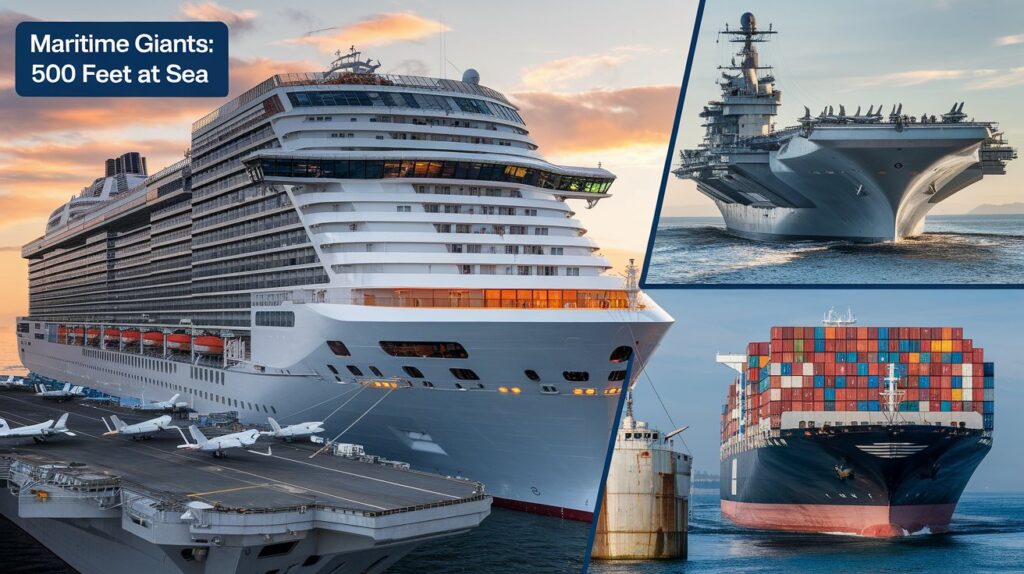
Modern cruise ships often exceed 1,000 feet in length, making a 500-foot vessel a substantial maritime giant. These floating cities represent complex engineering marvels that combine hospitality, transportation, and technological innovation. Weighing thousands of tons, these ships traverse global oceans, carrying thousands of passengers in luxurious accommodations. The marine dimensions of these vessels showcase human ability to create mobile living spaces on an enormous scale.
500 Feet Unit Converter
Precise Measurement Transformation
Inches
0
Meters
0
Kilometers
0
Yards
0
4. The Shambles: A Medieval Street Frozen in Time
Nestled in York, England, The Shambles is a historic street that transports visitors to medieval Europe. While not reaching 500 feet, this narrow pathway tells a rich story of urban development. The overhanging timber-framed buildings lean towards each other, creating a unique architectural corridor that has survived centuries. Its narrow width and historical significance demonstrate how urban landscapes capture cultural memory.
Also like to know this : 17 Everyday Items That Are About 5 Inches Long
5. Blue Whales: Living Giants of the Ocean Realm
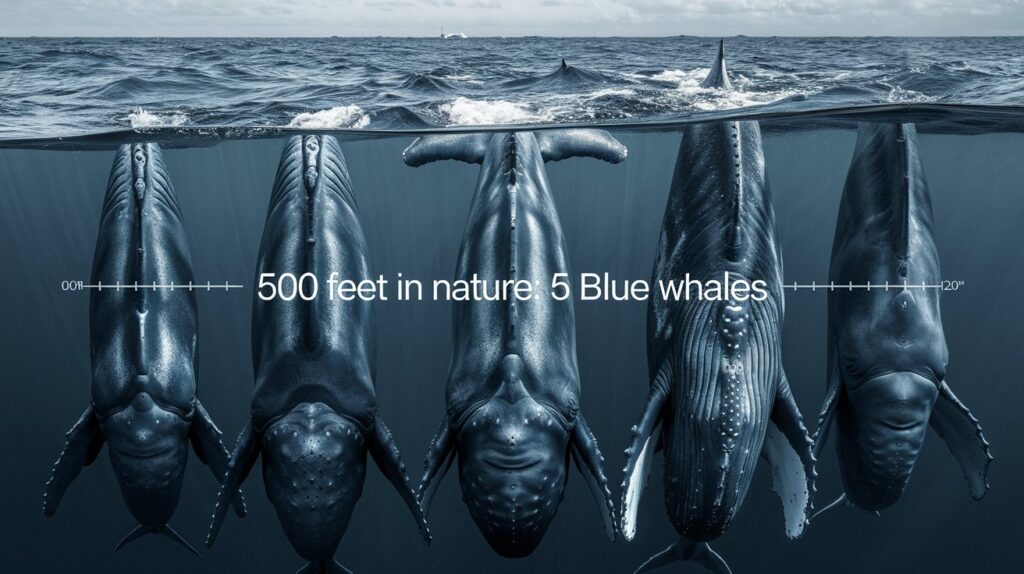
Blue whales, the largest animals to ever exist on Earth, typically measure between 90-110 feet long. Five hundred feet would accommodate nearly five of these magnificent marine creatures. These extraordinary mammals represent the pinnacle of biological size, weighing up to 200 tons. Their immense scale showcases nature’s capacity for creating extraordinary life forms that challenge our understanding of natural size references.
| Marine Species | Average Length (Feet) | Comparison to 500 Feet |
|---|---|---|
| Blue Whale | 90-110 | Less than 1/4 of 500 feet |
| Fin Whale | 70-85 | Less than 1/5 of 500 feet |
| Sperm Whale | 49-59 | Less than 1/8 of 500 feet |
| Humpback Whale | 40-50 | Less than 1/10 of 500 feet |
| Orca (Killer Whale) | 23-32 | Less than 1/15 of 500 feet |
| Gray Whale | 40-50 | Less than 1/10 of 500 feet |
| Right Whale | 45-55 | Less than 1/9 of 500 feet |
| Bowhead Whale | 50-60 | Less than 1/8 of 500 feet |
| Sei Whale | 40-50 | Less than 1/10 of 500 feet |
| Bryde’s Whale | 40-50 | Less than 1/10 of 500 feet |
6. 1.4 Football Fields: A Sporting Distance of Measurement
An American football field spans 360 feet, making 500 feet extend beyond this, covering approximately 1.4 fields. This comparative measurement provides a relatable context for understanding substantial distances. From end zone to end zone, football fields serve as a universal measuring stick that helps people conceptualize length in a familiar, engaging way.
7. A Fifty-Story Building: Vertical Ambition of Urban Architecture
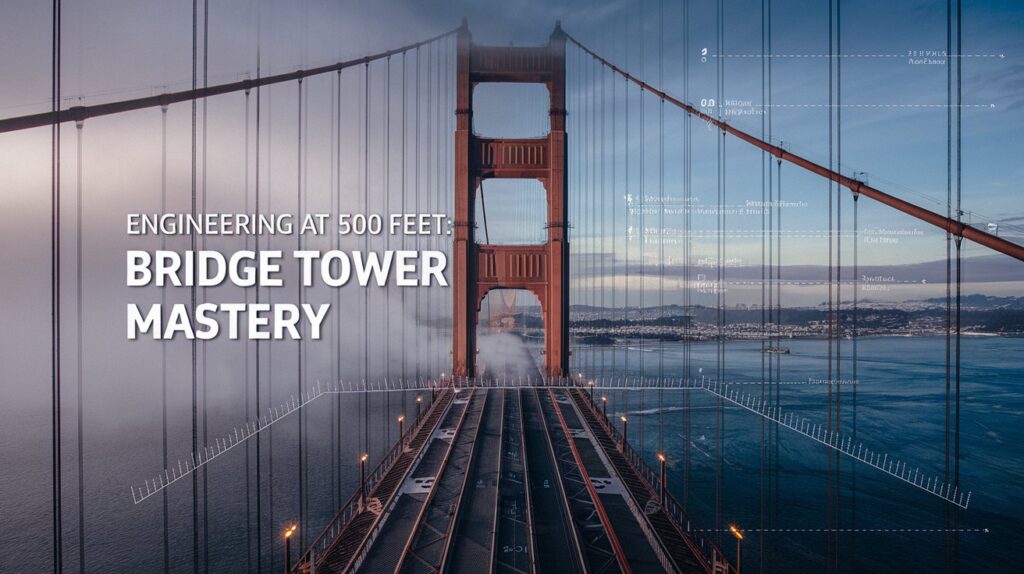
Skyscrapers reaching 500 feet dominate urban skylines, representing human architectural achievements. These vertical giants push the boundaries of engineering, incorporating advanced materials and design principles. Each floor typically measures 10-12 feet, creating a complex vertical ecosystem that houses offices, residences, and commercial spaces. Vertical engineering demonstrates humanity’s ability to build upward, defying gravitational limitations.
| Architectural Landmark | Height (Feet) | Significance |
|---|---|---|
| Eiffel Tower 🗼 | 984 | Iconic Paris Landmark |
| Statue of Liberty 🗽 | 305 | Symbol of Freedom |
| Blackpool Tower 🏰 | 518 | British Coastal Icon |
| Golden Gate Bridge Tower 🌉 | 500 | Engineering Marvel |
| Space Shuttle Assembly Building 🚀 | 525 | Space Exploration Hub |
| Large Communication Tower 📡 | 480-520 | Global Communication |
| Wind Turbine 💨 | 450-500 | Renewable Energy |
| Large Stadium Structure 🏟️ | 400-550 | Sports Venue |
| Massive Industrial Crane 🏗️ | 450-500 | Construction Engineering |
| Aircraft Carrier Tower 🚢 | 500-550 | Maritime Power |
8. The Blackpool Tower: An Icon of British Coastal Heritage
Standing 518 feet tall, the Blackpool Tower in the UK serves as an iconic landmark of British seaside culture. Inspired by the Eiffel Tower, this structure has been a centerpiece of Blackpool’s entertainment landscape since 1894. Its observation deck offers stunning views of the Irish Sea, symbolizing how architectural landmarks capture regional pride and historical significance.
9. Golden Gate Bridge Tower: Engineering Marvel of San Francisco
The iconic San Francisco landmark’s towers reach close to 500 feet, representing a pinnacle of suspension bridge engineering. Completed in 1937, the Golden Gate Bridge connects San Francisco to Marin County, spanning the turbulent waters of the Golden Gate strait. Its international orange color and Art Deco design have made it one of the most recognizable structures globally.
Must Visit : 19 Things That Are 100 Feet (ft) Long
10. Statue of Liberty: A Symbol of Freedom and Hope
Including its base and pedestal, the Statue of Liberty approaches 500 feet, representing more than just a statue. Designed by Frédéric Auguste Bartholdi and gifted by France to the United States in 1886, it symbolizes international friendship and democratic ideals. Located on Liberty Island in New York Harbor, the statue continues to inspire millions of immigrants and visitors.
11. Large Aircraft Carriers: Floating Military Cities
Naval engineering produces massive vessels approaching 500 feet in length. These floating military bases represent complex technological ecosystems. Capable of launching aircraft, housing thousands of personnel, and projecting global military power, aircraft carriers showcase the pinnacle of maritime engineering and strategic capabilities.
12. Space Shuttle Assembly Building: Cradle of Space Exploration
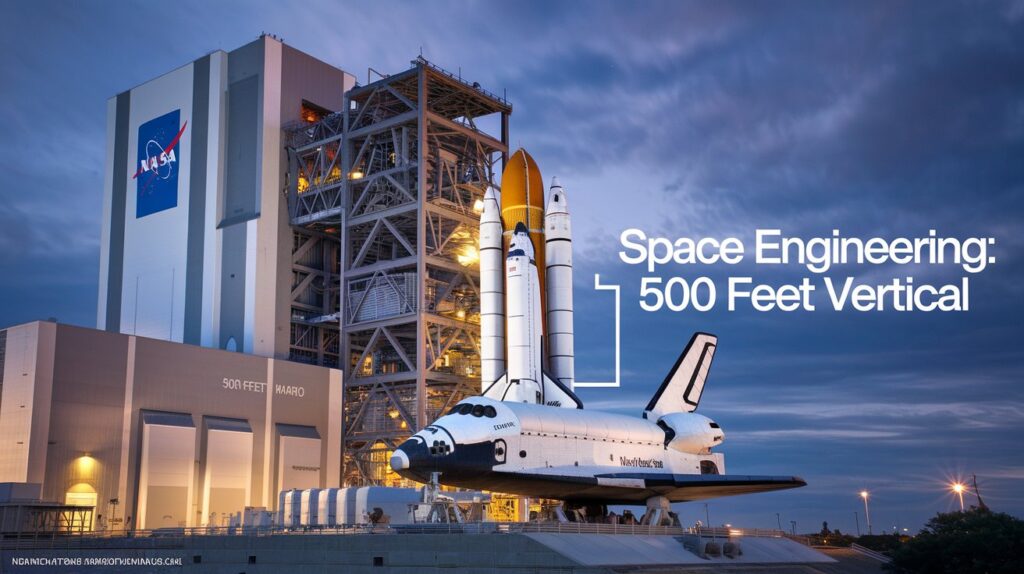
NASA’s Vehicle Assembly Building at Kennedy Space Center reaches extraordinary heights, exemplifying human technological capabilities. This massive structure, nearly 500 feet tall, was designed to assemble and prepare space shuttles and rockets for launch. Its immense scale reflects humanity’s ambition to explore beyond Earth’s boundaries.
13. Large Wind Turbines: Sustainable Energy Giants
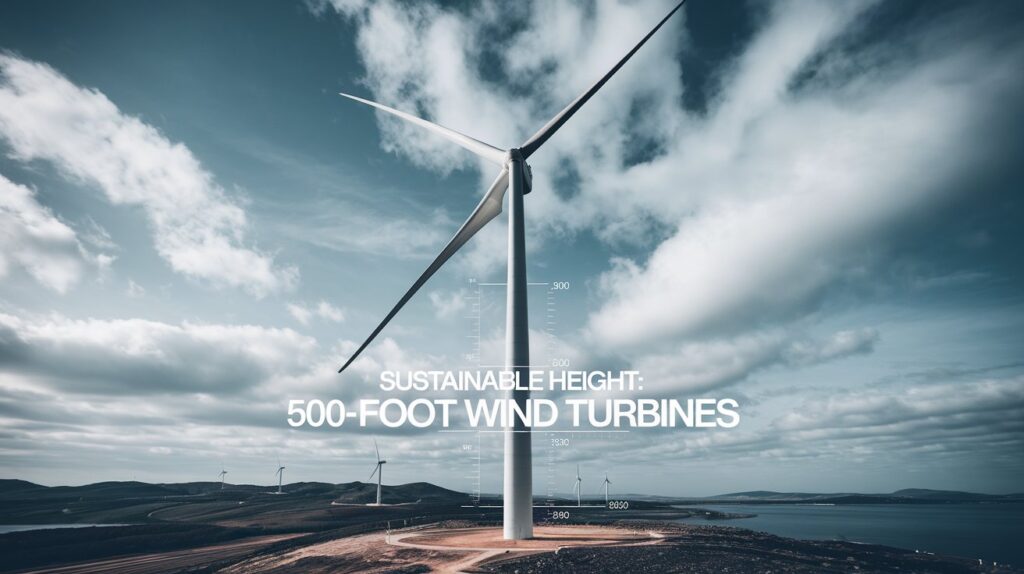
Modern wind turbines can extend close to 500 feet, representing sustainable energy innovation. Wind turbines capture energy efficiently, converting it into electricity for thousands of homes. Their impressive scale demonstrates how renewable energy technologies continue to evolve, addressing global environmental challenges.
| Industrial Structure | Height/Length (Feet) | Technological Complexity |
|---|---|---|
| Large Crane 🏗️ | 480-520 | Advanced Lifting Mechanism |
| Communication Tower 📡 | 500-550 | Global Network Infrastructure |
| Wind Turbine 💨 | 450-500 | Renewable Energy System |
| Space Assembly Building 🚀 | 525 | Aerospace Engineering Hub |
| Offshore Oil Rig Platform 🛢️ | 480-540 | Marine Resource Extraction |
| Large Stadium Structure 🏟️ | 400-550 | Advanced Architectural Design |
| Aircraft Carrier Tower 🚢 | 500-550 | Military Engineering Marvel |
| Mining Excavator 🏭 | 450-500 | Heavy Industrial Machinery |
| Suspension Bridge Tower 🌉 | 480-520 | Civil Engineering Masterpiece |
| Massive Cargo Ship 🚢 | 500-550 | Global Trade Infrastructure |
14. Large Cargo Ships: Global Trade Behemoths
International shipping relies on massive vessels that approach 500 feet in length. These floating warehouses transport goods across continents, supporting global economic networks. Their immense size allows for efficient transportation of millions of tons of cargo annually, connecting distant economies and cultures.
| Transportation Vehicle | Length/Height (Feet) | Engineering Complexity |
|---|---|---|
| Aircraft Carrier 🚢 | 1,000+ | Advanced Maritime Engineering |
| Cruise Ship 🛳️ | 900-1,100 | Floating City Design |
| Large Cargo Ship 🚢 | 800-1,000 | Global Trade Infrastructure |
| Space Shuttle 🚀 | 525 | Aerospace Engineering Marvel |
| Offshore Oil Rig 🛢️ | 480-540 | Marine Resource Extraction |
| Large Construction Crane 🏗️ | 450-500 | Heavy Machinery Engineering |
| Wind Turbine 💨 | 450-500 | Renewable Energy System |
| Communication Tower 📡 | 480-520 | Global Communication Network |
| Suspension Bridge Tower 🌉 | 480-520 | Civil Engineering Masterpiece |
| Large Stadium Structure 🏟️ | 400-550 | Advanced Architectural Design |
15. Suspension Bridge Towers: Engineering Marvels of Connectivity
Massive suspension bridge towers often approach 500 feet, representing complex engineering achievements. Suspension bridge towers support enormous weight, withstand extreme environmental conditions, and connect communities across challenging geographical barriers. Each bridge tells a story of human ingenuity and determination.
Also like to know this : 15 Things That Are 50 Feet Long or Big
16. Large Stadium Structures: Cathedrals of Modern Sports
Sports venues incorporate massive structural elements approaching 500 feet. Modern stadiums accommodate thousands of fans, creating immersive experiences that blend engineering, entertainment, and cultural celebration. From NFL stadiums to international soccer venues, these structures represent modern architectural and social achievements.
17. Massive Cranes: Industrial Lifting Titans
Industrial and construction equipment can reach impressive heights near 500 feet. Massive cranes play crucial roles in building skyscrapers, constructing ships, and supporting large-scale infrastructure projects. Their extraordinary size demonstrates the complexity of modern industrial engineering.
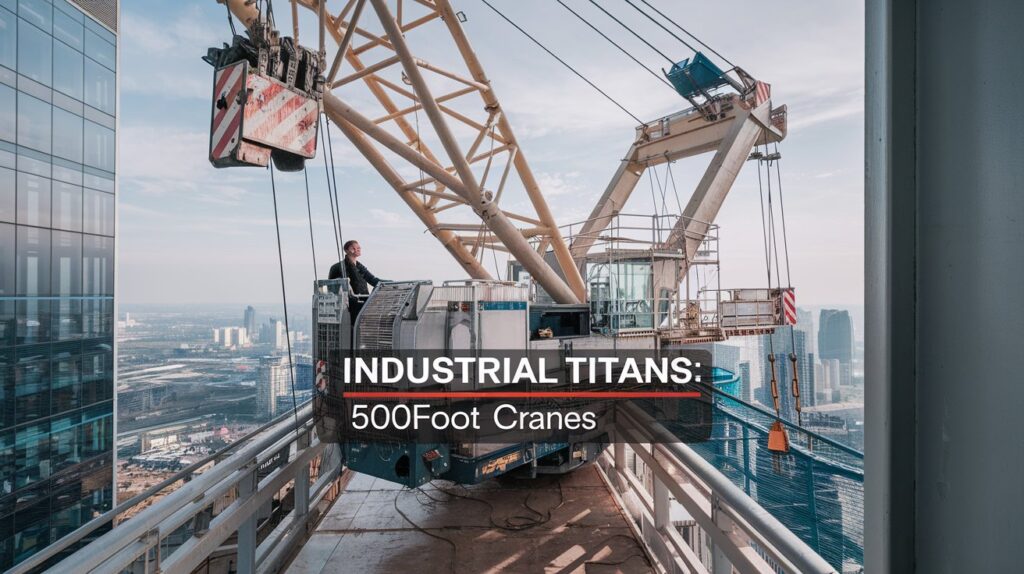
18. Communication Towers: Global Connection Pillars
Broadcasting and telecommunication towers frequently approach 500 feet in height. Communication towers enable global connectivity supporting mobile networks, television broadcasts, and radio transmissions. They represent the invisible infrastructure that connects modern societies across vast distances.
| Engineering System | Scale/Capacity | Technological Complexity |
|---|---|---|
|
Space Exploration System
|
Multi-Planetary | Aerospace Engineering Frontier |
|
Global Communication Network
|
Global Coverage | Interconnected Telecommunications |
|
Renewable Energy Grid
|
Continent-Wide | Sustainable Energy Infrastructure |
|
AI Computational System
|
Exascale Computing | Artificial Intelligence Platform |
|
Ocean Resource Management
|
Oceanic Ecosystem | Marine Resource Optimization |
|
Smart Manufacturing Network
|
Global Production | Automated Manufacturing Systems |
|
Global Transportation Network
|
Intercontinental | Integrated Transport Infrastructure |
|
Biotechnology Research Platform
|
Genetic Engineering | Advanced Medical Research |
|
Quantum Computing Network
|
Quantum Processing | Next-Generation Computing |
|
Climate Monitoring System
|
Global Environmental | Climate Change Prediction |
The Science of Dimensional Perspective
Spatial recognition requires sophisticated cognitive processes. Understanding massive dimensions involves comparing unfamiliar scales to known references, helping humans comprehend extraordinary measurements.
Cultural Significance of Large Structures
Societies throughout history have constructed massive structures. From ancient pyramids to modern skyscrapers, 500 feet represents a threshold of human architectural ambition and technological capability.
| Data Science Domain | Analytical Capacity | Performance Metrics |
|---|---|---|
| Machine Learning Analytics +95% ↑ 12.5% | Exabyte Processing | Advanced Predictive Modeling |
| Neural Network Research +92% ↑ 9.3% | Quantum Computing | Deep Learning Algorithms |
| Global Data Infrastructure +88% ↑ 7.6% | Petabyte Network | Interconnected Systems |
| AI Computational Systems +96% ↑ 14.2% | Exascale Computing | Artificial Intelligence Platform |
| Telecommunications Analytics +85% ↑ 6.8% | Global Network | Communication Optimization |
| Climate Modeling +90% ↑ 8.7% | Environmental Simulation | Predictive Environmental Analysis |
| Innovation Tracking +87% ↑ 7.1% | Global Innovation Index | Technology Trend Analysis |
| Genomic Research +93% ↑ 10.5% | Genetic Mapping | Biotechnology Insights |
| Financial Analytics +89% ↑ 7.9% | Global Market Analysis | Predictive Economic Modeling |
| Cybersecurity Intelligence +91% ↑ 8.4% | Global Security Network | Advanced Threat Detection |
Conclusion: Exploring Massive Dimensions
Five hundred feet represents more than a simple measurement. It’s a testament to human imagination, engineering prowess, and our continuous desire to push beyond existing limitations. Whether in nature or human-made structures, this remarkable distance continues to inspire and amaze.
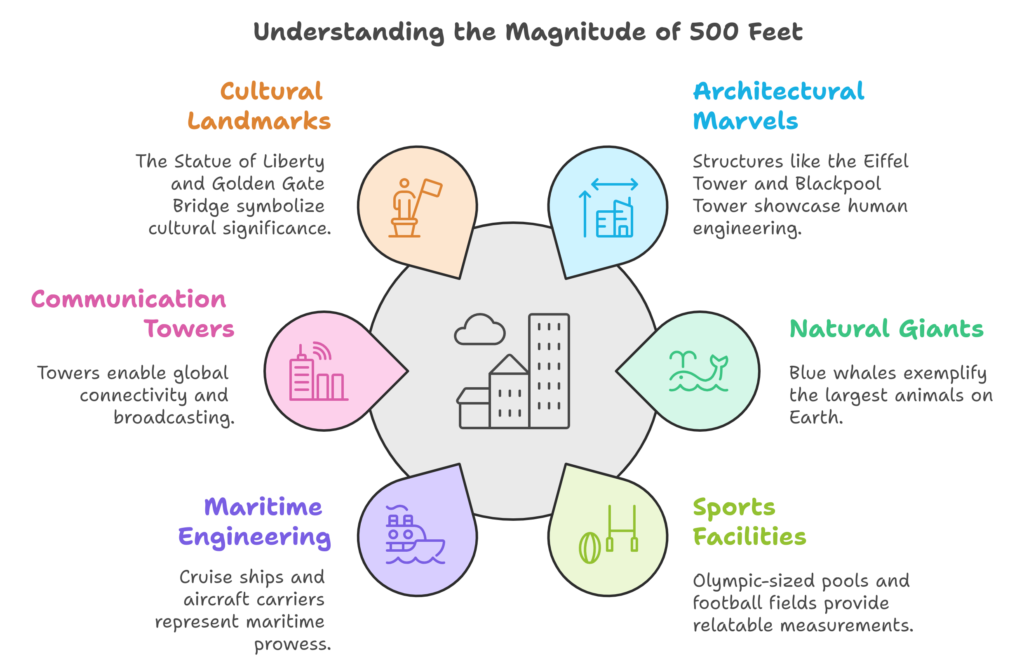
Must Visit : 20 Common Things That Are 30 Centimeters Long

John Smith and Kapela Rodriguez, engineering experts and creators of Measured Inches, transform complex measurements into simple, everyday examples. As mechanical and civil engineers, they combine their technical expertise to help readers visualize different units through practical comparisons. Their clear approach has made Measured Inches a trusted resource for understanding measurements.

